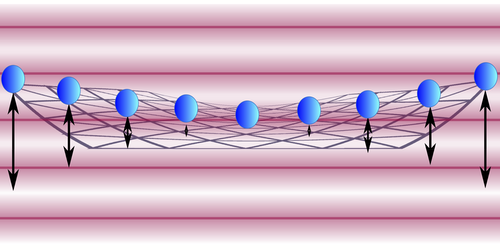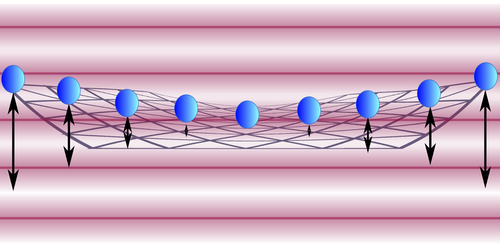Freezing a 2D Ion Crystal
For decades, researchers have attempted to cool macroscopic mechanical oscillators down to their quantum mechanical ground state. So far, however, they have only cooled a few selected vibrational modes of such oscillators. Now, Elena Jordan of the National Institute of Standards and Technology in Boulder, Colorado, and coworkers have simultaneously cooled all the “drumhead” modes of a thin 2D crystal made of 150 trapped beryllium (Be ) ions. The cooling of these modes—which resemble the out-of-plane vibrational modes of a drum’s membrane—could allow use of large trapped-ion crystals in applications including metrology and quantum simulation.
The researchers created a 2D lattice of trapped Be ions using magnetic and electric fields. To cool the lattice vibrations, the team used a laser-cooling scheme that exploits quantum interference effects between the atoms’ multiple energy levels to reduce the ions’ kinetic energies. Researchers previously used a version of this technique to simultaneously reduce the energy of multiple motional degrees of freedom, cooling the vibrational modes of a linear string of 18 atoms. Jordan and her coworkers now show that the scheme can cool mesoscopic systems with hundreds of atoms. They simultaneously froze all 150 drumhead vibrational modes of the Be ion array.
In their experiments, the researchers only cooled drumhead modes—in-plane vibrations, for example, remained untouched. However, they say that freezing out drumhead modes is particularly beneficial for quantum simulation applications involving ion crystals. For instance, having lower-amplitude drumhead modes could allow ion crystals to more faithfully simulate the Ising model, which describes a system of interacting spins on a lattice.
This research is published in Physical Review Letters.
—Matteo Rini
Matteo Rini is the Deputy Editor of Physics.





